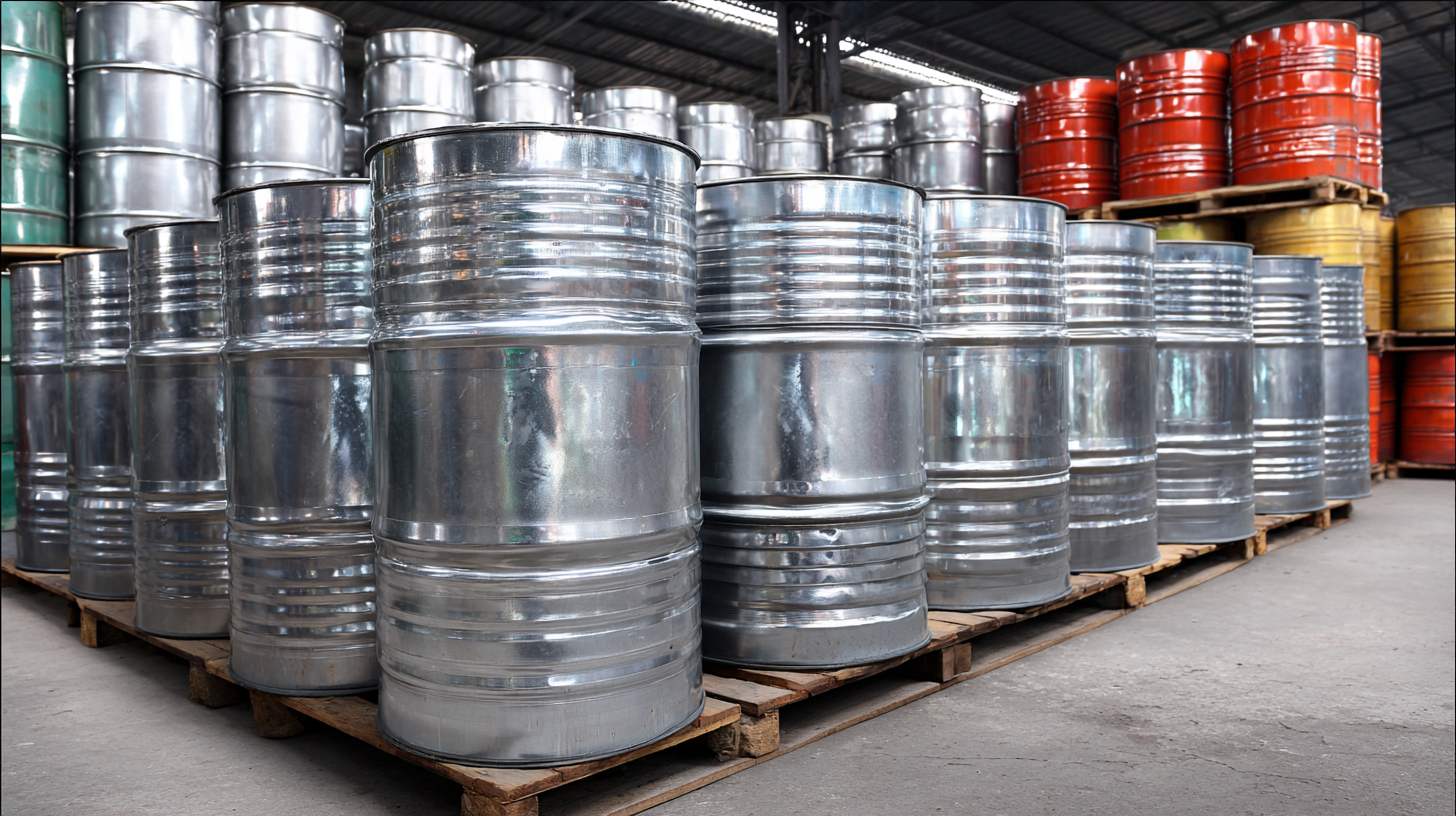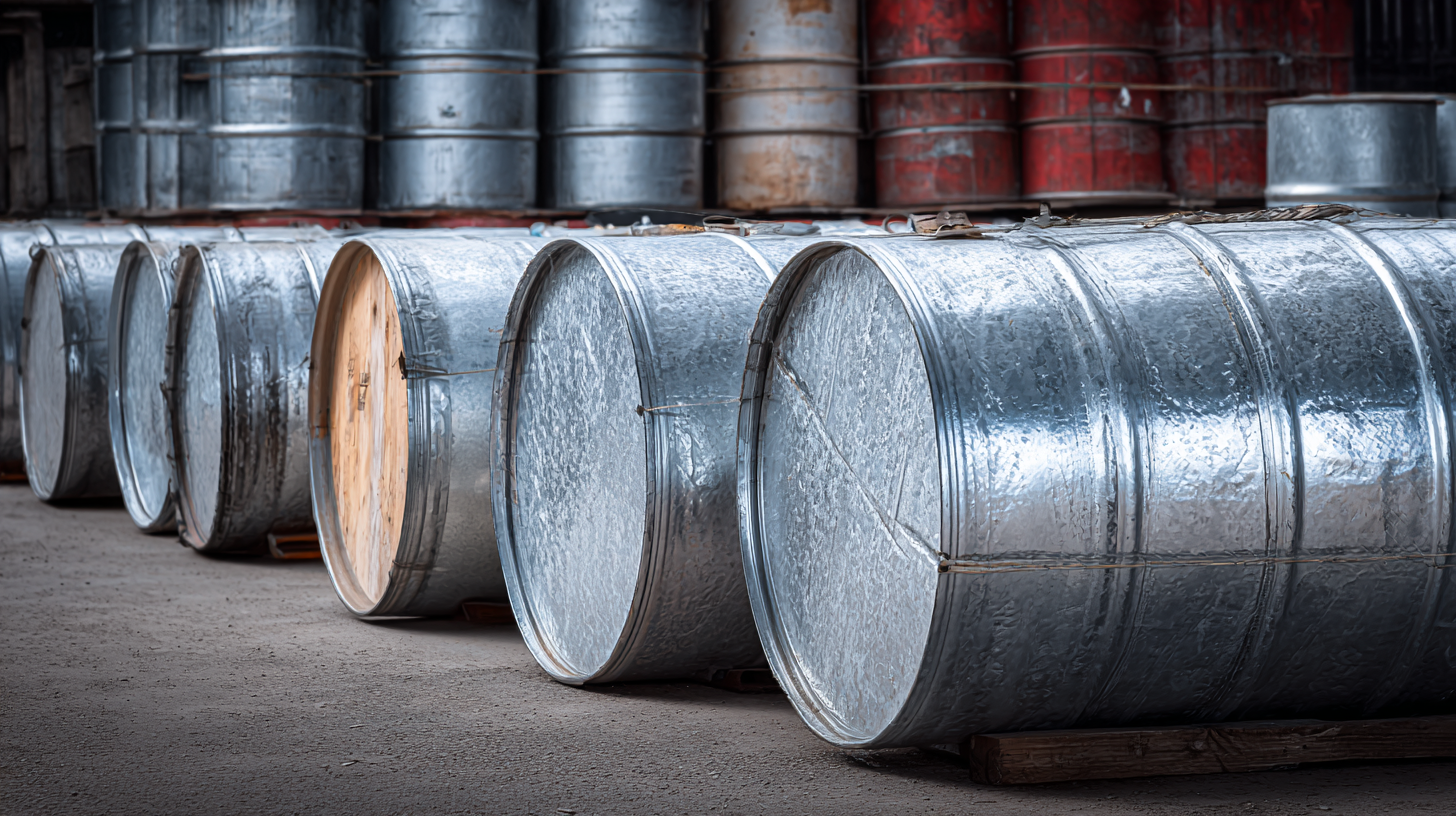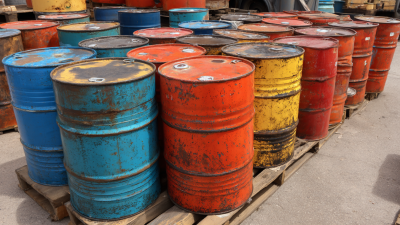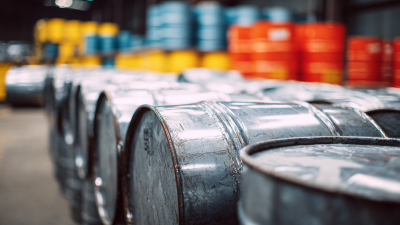Exploring the Versatility of Galvanized Iron Drums in Modern Industries
In recent years, the versatility of galvanized iron drums has garnered significant attention across various industries, proving them to be indispensable assets in both storage and transportation applications. According to a report by Grand View Research, the global metal containers market, which includes galvanized iron drums, was valued at approximately $14 billion in 2021 and is projected to expand at a compound annual growth rate (CAGR) of 4.6% through 2028. This growth is largely driven by the increasing demand for durable and versatile packaging solutions that can withstand harsh environmental conditions.

Galvanized iron drums, known for their excellent corrosion resistance and strength, have found their place in sectors ranging from chemicals and pharmaceuticals to agriculture and food safety. Their ability to comply with strict regulatory standards, as reported by the American Iron and Steel Institute, further enhances their appeal, with 67% of manufacturers citing compliance as a critical factor in choosing packaging materials. Moreover, the reuse and recycling potential of these drums align with the sustainable practices that modern industries are increasingly adopting, making them a preferred choice for environmentally conscious businesses.
In this exploration, we will delve into the extensive applications, benefits, and emerging trends surrounding galvanized iron drums, providing valuable insights and practical tips for industries looking to optimize their usage. As we unravel the capabilities of this robust container, it becomes evident that the galvanized iron drum is not just a practical solution but also a strategic asset in enhancing operational efficiency and sustainability.
Understanding Galvanized Iron Drums: Composition and Manufacturing Process
Galvanized iron drums have gained significant traction in various industries due to their durability and resistance to corrosion. The manufacturing process primarily involves the application of a zinc coating to iron or steel substrates. This galvanization process not only enhances the drum's lifespan but also allows for the storage of a wide range of substances, from chemicals to food products. According to a market analysis by Smithers Pira, the global market for steel drums is projected to reach $5.5 billion by 2025, driven largely by the increasing demand for safe and reliable storage solutions.
The composition of galvanized iron drums primarily includes low carbon steel, which is then coated with zinc through either hot-dip galvanizing or electro-galvanizing methods. Hot-dip galvanizing immerses the iron in molten zinc, creating a thicker and more durable layer, whereas electro-galvanizing offers a smoother finish but with a thinner coating. Reports indicate that drums with hot-dip galvanization exhibit a corrosion resistance that significantly extends their use in outdoor and harsh environments, with a lifespan of up to 20 years. This versatility allows industries such as pharmaceuticals, food processing, and chemicals to leverage galvanized iron drums for their operational needs, ensuring compliance with safety regulations while minimizing material failure risks.
Exploring the Versatility of Galvanized Iron Drums in Modern Industries
| Dimension |
Value |
Description |
| Diameter |
30 - 55 cm |
Typical diameter range for standard galvanized iron drums. |
| Height |
50 - 90 cm |
Standard height depending on the capacity of the drum. |
| Weight |
7 - 15 kg |
Weight varies based on thickness and size of the drum. |
| Capacity |
20 - 60 liters |
Volume corresponding to different applications. |
| Material |
Galvanized Iron |
Iron coated with a layer of zinc to enhance corrosion resistance. |
| Applications |
Chemicals, food storage, waste management |
Used across various industries due to durability. |
| Manufacturing Process |
Metal forming, galvanization, welding |
Processes involved in producing durable galvanized iron drums. |
Key Benefits of Using Galvanized Iron Drums in Various Industries
 Galvanized iron drums have emerged as a critical asset across various modern industries, owing to their unique properties that cater to diverse needs. One of the key benefits is their exceptional resistance to corrosion. The galvanized coating protects the metal from moisture and environmental elements, ensuring a longer lifespan compared to traditional steel drums. This durability makes them ideal for industries such as chemicals, food processing, and oil, where safe and reliable storage of liquids is paramount.
Galvanized iron drums have emerged as a critical asset across various modern industries, owing to their unique properties that cater to diverse needs. One of the key benefits is their exceptional resistance to corrosion. The galvanized coating protects the metal from moisture and environmental elements, ensuring a longer lifespan compared to traditional steel drums. This durability makes them ideal for industries such as chemicals, food processing, and oil, where safe and reliable storage of liquids is paramount.
Another significant advantage of galvanized iron drums is their strength and structural integrity. They can withstand heavy loads and physical stress, making them suitable for transportation and storage of industrial materials. Additionally, their lightweight nature facilitates easy handling and transit, thus reducing shipping costs. Moreover, the versatility of these drums allows for customization in terms of size and shape, catering to specific industry requirements while maintaining compliance with safety regulations.
Practical Applications of Galvanized Iron Drums in Storage and Transportation
Galvanized iron drums have become indispensable tools in various industries, particularly for storage and transportation purposes. Their corrosion-resistant properties, thanks to the zinc coating, make them ideal for holding a wide range of substances, from liquids to granular materials. In sectors such as chemicals, food, and pharmaceuticals, these drums ensure that products remain uncontaminated and safe during storage. Their robust design also allows them to withstand the rigors of transportation, whether by land, sea, or air, thus reducing the risk of leakage or damage.
Furthermore, the versatility of galvanized iron drums extends to their stackability and compatibility with automated handling systems. These features facilitate efficient logistics and warehouse management, as they can be easily loaded and unloaded with forklifts or other machinery. Industries often utilize these drums for the bulk transport of hazardous materials, where safety and reliability are paramount. Overall, the practical applications of galvanized iron drums in modern storage and transportation underscore their value in maintaining product integrity while optimizing operational efficiency.
Maintaining and Cleaning Galvanized Iron Drums for Longevity
 Maintaining and cleaning galvanized iron drums is crucial for extending their lifespan and ensuring optimal performance in various industrial applications. According to a report by the National Association of Manufacturers, proper maintenance practices can increase the durability of these drums by up to 30%. Regular inspections should focus on identifying corrosion spots and structural weaknesses, which can be addressed to prevent further degradation. Employing routine cleaning with mild detergents and avoiding abrasive scrubbing can effectively remove contaminants without damaging the protective galvanized coating.
Maintaining and cleaning galvanized iron drums is crucial for extending their lifespan and ensuring optimal performance in various industrial applications. According to a report by the National Association of Manufacturers, proper maintenance practices can increase the durability of these drums by up to 30%. Regular inspections should focus on identifying corrosion spots and structural weaknesses, which can be addressed to prevent further degradation. Employing routine cleaning with mild detergents and avoiding abrasive scrubbing can effectively remove contaminants without damaging the protective galvanized coating.
Furthermore, the American Society for Testing and Materials (ASTM) emphasizes the importance of storing galvanized iron drums in a controlled environment to mitigate rust formation. Maintaining a stable, dry location reduces the likelihood of moisture accumulation, a primary contributor to corrosion. Using protective liners can also extend the life of these drums by minimizing direct contact with harsh chemicals. By adhering to these maintenance protocols, industries can enhance not only the longevity of their galvanized iron drums but also ensure safer handling and storage of materials, ultimately leading to more efficient operational outcomes.
Innovative Uses of Galvanized Iron Drums Beyond Traditional Applications
Galvanized iron drums have long been associated with traditional applications, primarily in the storage and transport of liquids and bulk materials. However, their versatility is increasingly being recognized in modern industries, leading to innovative uses that extend far beyond these conventional roles. For instance, many businesses are now repurposing galvanized iron drums as creative planters in urban gardening projects. These drums provide an affordable, durable solution for growing plants in limited spaces, allowing cities to incorporate greenery into their landscapes effectively.
Moreover, galvanized iron drums are finding their way into the realm of art and design. Artists and designers are transforming these sturdy containers into striking sculptures and functional furniture pieces, highlighting their aesthetic potential. This trend not only promotes recycling and sustainability but also showcases the adaptability of galvanized iron in various creative contexts. By embracing these innovative applications, industries can tap into new markets and redefine the purpose of galvanized iron drums in environmentally conscious ways.



 Maintaining and cleaning galvanized iron drums is crucial for extending their lifespan and ensuring optimal performance in various industrial applications. According to a report by the National Association of Manufacturers, proper maintenance practices can increase the durability of these drums by up to
Maintaining and cleaning galvanized iron drums is crucial for extending their lifespan and ensuring optimal performance in various industrial applications. According to a report by the National Association of Manufacturers, proper maintenance practices can increase the durability of these drums by up to 


